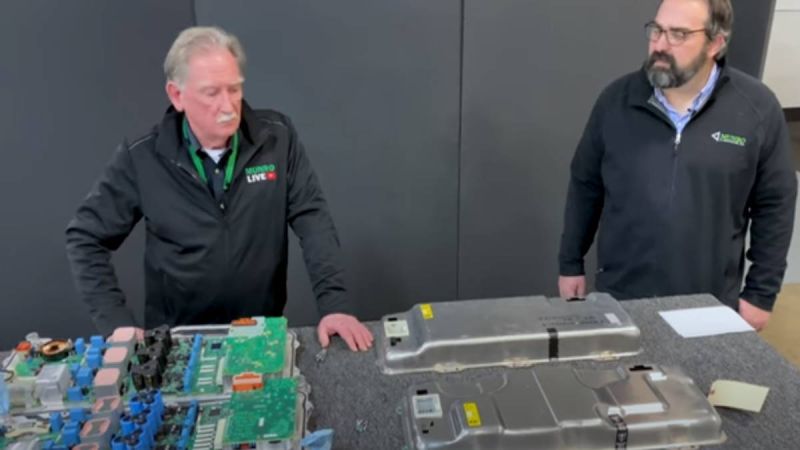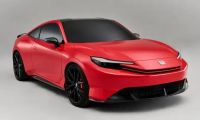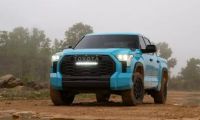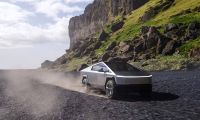Tesla Model S Plaid Battery - An Engineering Masterpiece
Sandy Munro and his associate started looking at a Tesla Model S Plaid battery. The first thing they saw was the Mica Shield. The Mica Shield is about a 30 pound piece of steel or metal that is on top of the battery. The Mica Shield bolts to a steel frame. The main reason for this appears to be for structural integrity and to better protect from any kind of fire. China has strict requirements, which is causing companies to put in more protection to better protect from fires. Sandy Munro doesn't like the Mica shield because Mica requires mining. He likes fire retardant plastics because it doesn't require mining.
They removed the Mica Shield, showing the structure of the lower part of the battery case. There is a welding technique patented by General Motors in 2012 called concentric welds. It's used to extend the life of the welding tips of the welding machines by about 3 times.
Tesla has also increased their welding area to give more area to their battery pack being put together. There's a bigger gap, about 25 millimeters, for the battery pack to flex and move, giving it some flexibility.
There are four different castings being used for different mounting techniques, some used to hold the battery pack together and some to reduce part counts for mounting different components.
The connecting system is different than anything Sandy has seen from Tesla. There is a thermal management system that runs down the side of the battery pack. There is a connector on the battery pack to allow coolant to flow through the battery module.
Cooling the battery seems to be a VERY important part of having a functional battery pack.
Further Battery Take Down
There is a small piece of a vent of the battery that Sandy took out. They are small pink parts. What's interesting about them is that there are wafers on the vents. Humidity expands the wafers on the vents, which causes the plunger to release air in the vents that dissipates. The wafers on the vents helps facilitate that.
There are also valves used to protected the wiring along the battery system. All connections run to a battery management system for the vehicle. They are also capturing the coolant from the coolant pipes. Tesla is also trying to get as much as they can out of each part. The batteries are also sectioned and if there is any issue in a section of the battery it will be contained to just that section.
There is a connector that was like the one for the Model Y that runs all along the side of the battery pack. The connection is much longer because the location of the battery input is at the front of the pack instead of the rear. The inputs are now part of the battery pack and there are now only 5 modules instead of 16 for the old Model S. The longer cable is for better efficiency.
There is an increased number of battery cells compared to the old Model S. The old S had 7,104 cells in it at 85 kW. They've gotten more efficient in less space and now have 7,920 cells at 100 kW. That's an increase of efficiency from about 83.6 cells per kW to now 79.2 cells per kW.
The old Model S used to be 157 watt hours per kilogram. Now, 181.5 watt hours per kilogram. Tesla is getting more charge with less weight.
Even the bolts that connect the Model S Plaid covers and pieces are different. The vent on the cover is smaller and plastic, likely making it easier to put on. They compared specifics about the Model Y control board with the Model S Plaid control board. The Model S Plaid controller board is smaller and has only 1 coil as opposed to 2 for the Model Y. Also, the coil is smaller for the Model S Plaid.
For further details on the amazing engineering of the Model S Plaid video, see the Munro Live video below:
What do you think about the Tesla Model S Plaid battery? Is it an engineering masterpiece like Sandy Munro says?
Leave your comments below, share the article with friends and tweet it out to your followers.
Jeremy Johnson is a Tesla investor and supporter. He first invested in Tesla in 2017 after years of following Elon Musk and admiring his work ethic and intelligence. Since then, he's become a Tesla bull, covering anything about Tesla he can find, while also dabbling in other electric vehicle companies. Jeremy covers Tesla developments at Torque News. You can follow him on Twitter or LinkedIn to stay in touch and follow his Tesla news coverage on Torque News.












